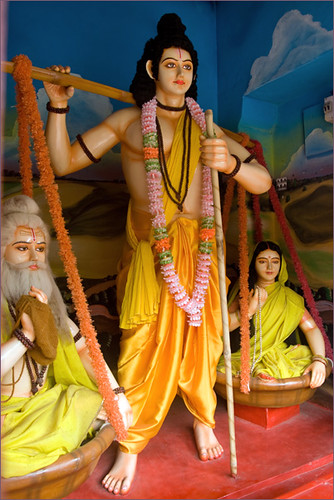 This is the notes taken from a talk given by Dr. Shri Ranganji on February 26, 2009 at Narada Gana Sabha in Chennai on the topic Gurukula Education Vs Modern Education - Shiksha Valli.
This is the notes taken from a talk given by Dr. Shri Ranganji on February 26, 2009 at Narada Gana Sabha in Chennai on the topic Gurukula Education Vs Modern Education - Shiksha Valli.Gurukula Education System(GES) is the oldest education system in the world.
Concept of the (GES)
1) Unlike the Modern Education System (MES),the students of the GES were not dependent on the their parents for their education.
2)There is no fee structure(the general concept was that education should not be sold).
3)All students generally used to seek alms (give it to the guru, as well as for themselves).
4)In general the whole society was responsible for the education of students.
5)Essentially after education,the students bring Dakshina(donation),for running of the Gurukulam.
Courses offered at GES:
Ayurveda,Dharmasastra, Arthashastra, Vaisheshika, Dhanurveda, Nyaya, Shilpashastra, Tarkshastra and many more… All these shastras were taught at Gurukulas,but they weren’t compulsory and a student could specialize in any field of interest.
FACT PROFILE:
It is said that SRI KRISHNA mastered all the shastras in a span of just 63 days.
The only compulsory subject of study was “Vedas”, its practices included Sandhya Vandhanam, Samithadhanam, which play a pivotal role in one’s cognitive development and grasping power.
Nextly,a comparison of the scientific research conducted between the GES and MES.
It was conducted for about 49 students from each system of education,but the baseline was that both of them were initially part of the MES,then 49 shifted over to the GES.The 49 students comprising the GES were from Hariharapura(near Sringeri),and the MES comprised of Indian Matriculation School(Dharmapuri).These students were tested initially and after one year the students underwent a medical check-up,and healthy boys were taken.The parameters on which they were gauged were:
Levels of intelligence
Spatial and verbal memories
Plannability and many more
Students of both these systems were residential,they had their daily routines,and the same natural surroundings. Tedious measures were taken for matching each one of the students from either of the systems,the factors that had to match were age,family circumstances,family background and so on. A series of tests were conducted which were highly scientific and technical in their approach,a few to name were:
CM Bhatia’s Test of verbal and spatial memory, Six letter Cancellation test, Shallice tower of London and a few others.
Learning strategies adopted in GES and MES.
Students of GES practiced Yoga and the different Asanas, whereas the MES students resorted to physicals exercises as that in a Gym. Students of the GES chanted Mantras japas (mainly gayatri japa),whereas the MES chanted rhymes(like jack n jill).Students of GES performed their puja themselves,whereas MES students did their daily prayers. In the evenings GES students had their Bhajans,the MES students practised light music.The GES students played games like Kabbadi,the MES students played games like Cricket, Basketball,etc.
The inference of these as mentioned is highly technical, but in crux improvement was p<0.05, and highly significant improvement were seen in that of the students of the GES. Not that the students of the MES didn’t show improvement,they did,but it was not as significant as that of the GES.
ESSENTIALS OF GES:
Group Discussion
Interaction with the guru
Self learning
Pranayam
Mantra chanting and many more
It is also important to note that the Bible, Quran, Ramayan, Mahabharatham, Kalidasa’s works, Shakespeare’s works and many others were subjected to interpolation over a period of time, but the essential aspect of the Vedas due to the redundancy technique(Sandhe,Tiruve,Avruthi)applied never changed even after repeated chanting over eons.
Fact profile:
By the practice of yoga, pranayam, mantra chanting anxiety is reduced.
The performance of the Sandhya Vandhana,essentially involved the all forms of Yoga namely the Raja yoga,Karma yoga,Dhyana yoga and many more.
Firstly the US tried to patent Turmeric, then Cow Urine.
Now,Germany is trying to patent “Leech”, for anesthesia, this technique was anciently adopted in Ayurveda. (Related article, see post below)
Also a data revealed that village students were more creative than those in the city. The main reason cited was that the city students lacked originality, the main reason for that being their regular exposure to the mass media and TV, which have comparatively less influence on the village students.
Thereby the essence is that GES enhances Cognitive development.
The least thing that can be done could be the implementation of the GES techniques such as chanting of Prayers, Bhajans, practice of Pranayama, and a regular routine of taking students to temples.
Purpose of Education:
Study, discourse are the elements of the GES.They learn “Rytham”(truth in movement),”Sathyam”(truth in being).
Note: Thanks to T.Shankar Ram for coming up with the crux of the speech of Shri Rangan Ji.)









